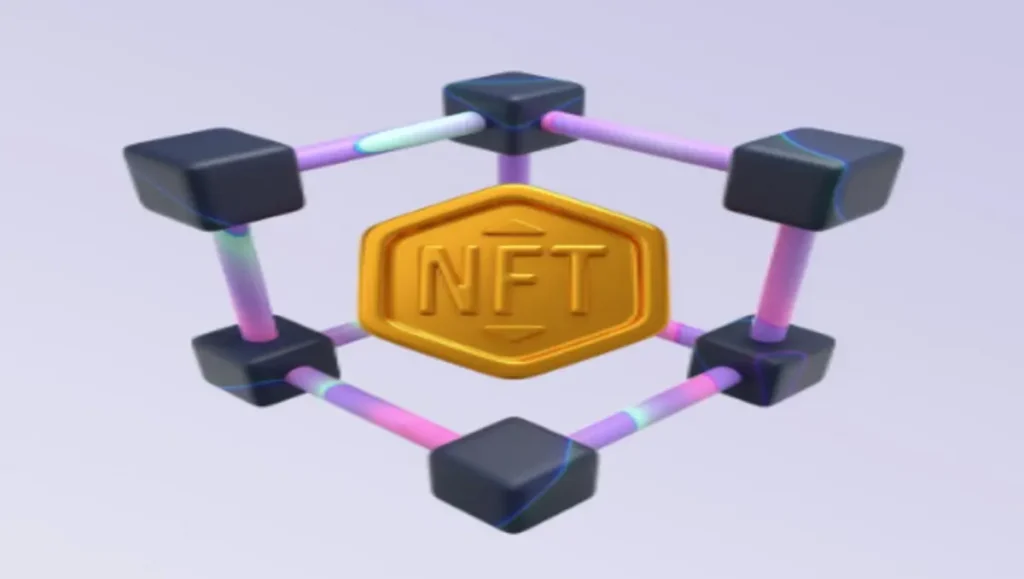Blockchain is often hailed as one of the most revolutionary technologies in the world today. It powers cryptocurrencies like Bitcoin, but its potential extends far beyond digital currencies. Blockchain has the ability to disrupt a wide range of industries, from finance to healthcare, supply chain management, and beyond. However, like any emerging technology, it comes with its share of advantages and drawbacks. In this article, we will explore the positives and negatives of blockchain, using simple terms to explain its complex nature and highlighting the human impact this technology has.
What is Blockchain?
At its core, blockchain is a distributed ledger technology (DLT) that securely records transactions across a network of computers. Unlike traditional databases, a blockchain does not rely on a central authority (like a bank or government) to verify transactions. Instead, it uses cryptography and consensus mechanisms to ensure the accuracy and security of the data being shared.
Blockchain consists of blocks that contain information, which are linked together in a chain (hence the name). Once data is recorded in a block, it is virtually immutable—meaning it cannot be altered or tampered with without disrupting the entire chain, making blockchain a secure way to store and transfer information.
The Positive Impact of Blockchain Technology
1:Enhanced Security
One of the most significant advantages of blockchain is its unparalleled security. Each transaction on a blockchain is verified by multiple parties and is encrypted, making it nearly impossible to alter or hack. This makes blockchain an excellent choice for applications where security is paramount, such as financial transactions, medical records, and identity verification.
For instance, in the healthcare industry, patient data could be stored on a blockchain, ensuring that only authorized parties can access it, and that the data cannot be tampered with. This could lead to more efficient and secure healthcare systems worldwide.
2:Decentralization and Transparency
Blockchain’s decentralized nature means that no single entity has control over the entire system. This reduces the risk of corruption or censorship. Transactions are recorded on a public ledger, which anyone can access. This transparency can be particularly beneficial in sectors such as supply chain management, where consumers and businesses want to track the journey of products and verify the authenticity of goods.
For example, a company could use blockchain to verify the origins of its products, from sourcing raw materials to manufacturing and shipping. This transparency builds trust between businesses and customers and allows consumers to make informed decisions.
3:Improved Efficiency and Reduced Costs
Blockchain eliminates the need for intermediaries (like banks, brokers, or notaries), which often slow down processes and add additional costs. With blockchain, transactions are processed directly between parties in a matter of seconds, with no third-party involvement. This can lead to significant cost savings and efficiency improvements across various industries.
In finance, for instance, blockchain technology can simplify cross-border payments, allowing money to be transferred instantly and at a lower cost compared to traditional banking systems.
4:Innovation in Cryptocurrencies
Blockchain technology is the backbone of cryptocurrencies like Bitcoin and Ethereum. These digital currencies operate outside traditional banking systems, providing people with an alternative method of storing and transferring wealth. Cryptocurrencies allow for peer-to-peer transactions without the need for a central authority, which appeals to those who are looking for more control over their financial transactions.
Moreover, blockchain enables the creation of “smart contracts”—self-executing contracts where the terms of agreement are written directly into the code. These contracts automatically execute when predefined conditions are met, eliminating the need for intermediaries and reducing the risk of fraud.

The Negative Aspects of Blockchain Technology
1:Energy Consumption
One of the biggest criticisms of blockchain, particularly in the context of cryptocurrencies like Bitcoin, is the immense energy consumption required to process transactions. Blockchain networks rely on “mining” or “staking,” which requires powerful computers to solve complex mathematical problems. These processes are energy-intensive and contribute to environmental concerns.
For example, Bitcoin mining requires the energy equivalent of several small countries combined, which raises questions about its sustainability in the long term. As blockchain adoption grows, finding more energy-efficient methods will be essential to mitigate the environmental impact.
2:Scalability Issues
As blockchain networks grow, they often face scalability issues. Each transaction on a blockchain must be validated and recorded by all participants in the network, which can lead to slow transaction speeds and increased costs. For example, Bitcoin can handle only a limited number of transactions per second compared to traditional payment systems like Visa, which processes thousands of transactions every second.
This scalability challenge could hinder blockchain’s widespread adoption, especially in industries that require high transaction throughput, such as retail or real-time financial markets.
3:Regulatory Uncertainty
The decentralized nature of blockchain makes it difficult for governments to regulate, which raises concerns about its use for illegal activities. Cryptocurrencies, for instance, have been associated with money laundering, tax evasion, and black-market transactions due to their anonymous nature.
While blockchain advocates argue that its benefits outweigh these risks, governments around the world are still grappling with how to regulate the technology. Until clear regulations are established, uncertainty may hinder its full potential in industries that require compliance, such as finance and healthcare.
4:Complexity and Lack of Understanding
Despite its potential, blockchain remains a complex technology that many people find difficult to understand. This knowledge gap can prevent widespread adoption, as businesses and consumers may be hesitant to implement or use the technology if they don’t fully grasp how it works.
Moreover, developing and maintaining a blockchain network requires specialized knowledge, which could be a barrier for small businesses or individuals who do not have the technical expertise or resources to get involved.
5:Privacy Concerns
While blockchain offers transparency, this can also be a double-edged sword. In a public blockchain, all transaction data is available to anyone, which could pose privacy concerns for individuals and businesses. Although blockchain transactions are encrypted, they are still traceable, and in some cases, sensitive information could be exposed.
For instance, in healthcare or finance, individuals may not want their transactions to be publicly accessible. Solutions are being developed to address privacy issues (like zero-knowledge proofs), but these are still in the early stages.

Conclusion:
Blockchain is undoubtedly a powerful and disruptive technology, with the potential to transform industries and create new opportunities. Its ability to provide enhanced security, transparency, and efficiency is a game-changer in many sectors. However, the technology is still in its early stages, and challenges such as energy consumption, scalability, and regulatory uncertainty must be addressed before it can reach its full potential.
read more
https://financekhush.com/what-is-stock-analysis-and-how-does-it-work-2025/
As blockchain continues to evolve, it is likely that solutions will emerge to address its drawbacks, making it even more accessible and impactful for businesses and consumers alike. Whether we’re using blockchain for cryptocurrencies, secure voting systems, or supply chain transparency, its influence on the world is set to grow, and the way we interact with technology will never be the same again.
faq’s
1. What is blockchain and how does it work?
Blockchain is a decentralized digital ledger that securely records transactions across multiple computers. It works by storing data in blocks that are linked together in a chronological chain, ensuring that the data is tamper-proof and transparent. Each transaction is validated by a consensus mechanism, and once added to the blockchain, the information cannot be altered.
2. What industries can benefit from blockchain in the long term?
In the long term, blockchain technology can revolutionize industries such as finance, healthcare, supply chain management, real estate, and even government services. Financial institutions can improve transaction speeds and reduce fraud, while healthcare can benefit from secure and transparent medical record management. The supply chain can achieve better traceability and efficiency, and governments can use blockchain for secure voting systems and public record management.
3. How does blockchain enhance security and privacy?
Blockchain enhances security by encrypting data and ensuring that each transaction is validated by multiple parties. Since the data is distributed across a network rather than stored in a central database, it is less prone to hacking or tampering. Privacy is also a key concern, with advancements such as zero-knowledge proofs helping to ensure that transactions can remain private even while being transparent.
4. What are the challenges in scaling block chain for mass adoption?
Scaling block chain presents challenges due to the need for every participant in the network to validate each transaction. This can lead to slower processing times and higher costs, especially for public block chains like Bitcoin. Long-term scalability solutions are being researched, including layer 2 technologies, sharding, and alternative consensus mechanisms that can handle larger transaction volumes more efficiently.
5. Is block chain energy-efficient, and what is its environmental impact?
Block chain, particularly proof-of-work block chains like Bitcoin, are known for their high energy consumption, which raises environmental concerns. As the technology evolves, more energy-efficient consensus mechanisms like proof-of-stake are being developed. These aim to reduce the environmental impact while still ensuring the security and integrity of the block chain.
6. How will block chain impact financial systems in the future?
Block chain is poised to drastically reshape financial systems by enabling faster, more secure, and cost-effective transactions. Over time, it could reduce the reliance on intermediaries like banks and streamline cross-border payments. Additionally, the rise of central bank digital currencies (CBDCs) and decentralized finance (DeFi) platforms could further integrate block chain into mainstream financial systems.
7. What is the future of cryptocurrencies in relation to block chain?
Cryptocurrencies, which are powered by block chain, are expected to evolve significantly over the long term. Governments may regulate them more heavily, and new digital currencies might emerge alongside central bank digital currencies (CBDCs). As block chain adoption grows, cryptocurrencies could become more mainstream, offering individuals and businesses an alternative to traditional currencies and banking systems.
8. What are the legal and regulatory challenges surrounding block chain?
Block chain’s decentralized nature presents unique legal and regulatory challenges. Many countries are still figuring out how to regulate cryptocurrencies and block chain-based transactions. Issues like taxation, compliance, and anti-money laundering regulations are areas of concern. As block chain adoption increases, governments will likely introduce clearer regulations, but the pace and nature of this regulation will vary globally.
9. How can block chain improve transparency and reduce fraud in supply chains?
Block chain offers greater transparency in supply chains by allowing all parties to access the same, immutable record of transactions. This can reduce fraud and increase accountability, as each step of a product’s journey from production to delivery is recorded. Long-term, this could transform industries like agriculture, manufacturing, and retail by enabling consumers to verify the authenticity and origin of products.
10. What is the long-term potential of block chain in digital identity verification?
Block chain can revolutionize digital identity verification by providing individuals with control over their personal data. With block chain, users could own and manage their digital identities, sharing information only when necessary and ensuring that their data is secure and not vulnerable to hacking or misuse. In the long term, block chains could replace traditional identity systems, offering a more secure and efficient way to verify identities online.https://www.google.com/

1 thought on “ Blockchain Technology: A Simple And Complete Guide in 2025”